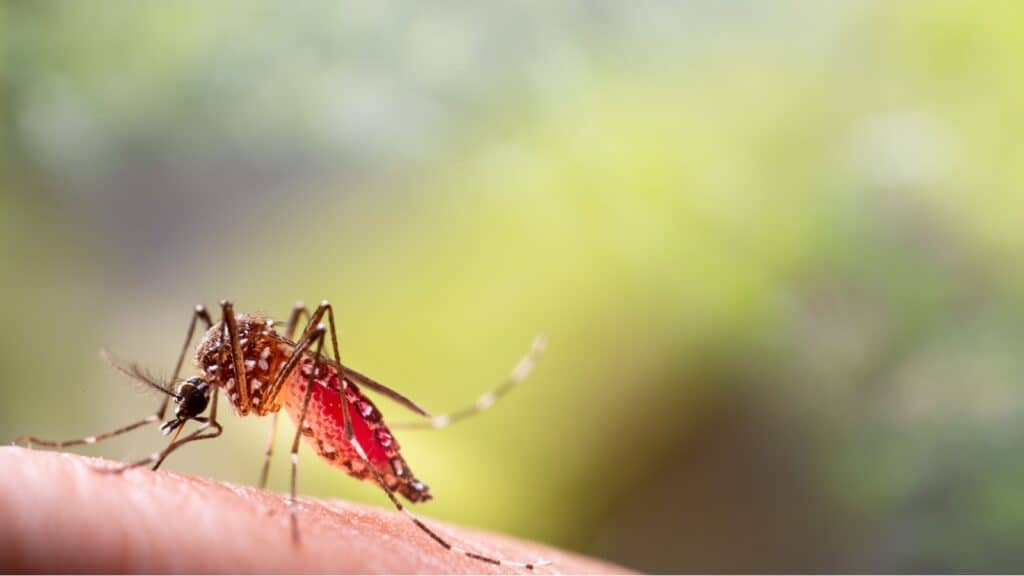10 Silent Signs of Prostate Cancer Men Shouldn’t Ignore
Prostate cancer is one of the most common cancers affecting men, with about 1 in 8 men diagnosed in their lifetime. While early-stage prostate cancer often has no symptoms, being aware of potential warning signs can lead to earlier detection and more effective treatment. Here are 10 early symptoms of prostate cancer that shouldn’t be ignored, though it’s important to note that these can also be caused by other conditions.
1. Frequent Urination, Especially at Night

One of the earliest signs of prostate cancer can be an increased need to urinate, particularly during the night, according to John Hopkins Medicine. This symptom, known as nocturia, occurs as the growing tumor puts pressure on the urethra.
2. Difficulty Starting or Stopping Urination

Men with prostate cancer may experience hesitancy when trying to urinate or have trouble stopping the flow of urine. This can be due to the enlarged prostate interfering with normal urinary function.
3. Weak or Interrupted Urine Flow

A weakened or interrupted urine stream is another potential early sign of prostate cancer. This occurs as the growing tumor constricts the urethra, making it more difficult for urine to pass through.
4. Burning or Pain During Urination

Some men with prostate cancer may experience a burning sensation or pain while urinating. While this can also be a sign of a urinary tract infection, it’s worth getting checked out if it persists.
5. Blood in Urine or Semen

The presence of blood in urine (hematuria) or semen can be an alarming sign that shouldn’t be ignored. While it doesn’t always indicate cancer, it requires immediate medical attention.
6. Difficulty Achieving or Maintaining an Erection

Sudden erectile dysfunction can be an early symptom of prostate cancer. However, it’s important to note that erectile dysfunction is more commonly caused by other factors and doesn’t necessarily indicate cancer.
7. Pain or Discomfort in the Pelvic Area

Some men may experience pain or discomfort in the pelvic region, which can be a sign of advanced prostate cancer. This discomfort may be constant or come and go.
8. Painful Ejaculation

Pain during ejaculation can be another potential early sign of prostate cancer. If you experience this symptom persistently, it’s important to consult with a healthcare provider.
9. Unexplained Weight Loss or Loss of Appetite

While less common in early-stage prostate cancer, unexplained weight loss or a decrease in appetite can be signs of more advanced disease. These symptoms warrant prompt medical attention.
10. Bone Pain

In advanced stages, prostate cancer can spread to the bones, causing pain, particularly in the back, hips, or pelvis. While bone pain is typically associated with later-stage cancer, it’s important to be aware of this potential symptom.
Lifestyle Changes That May Reduce Risk

Based on the search results, there are several lifestyle changes that may help reduce the risk of prostate cancer:
Maintain a healthy diet

– Eat plenty of fruits and vegetables (at least 5 servings per day).
– Choose whole grains over refined grains.
– Limit intake of red meat and processed meats.
– Reduce consumption of high-fat dairy products.
– Include foods rich in lycopene (like cooked tomatoes).
Stay physically active

– Regular exercise is associated with a lower risk of aggressive prostate cancer.
– Aim for at least 30 minutes of exercise most days of the week.
Maintain a healthy weight

– Being overweight or obese increases the risk of aggressive prostate cancer.
– Achieve and maintain a healthy BMI through diet and exercise.
Consider increasing intake of:

– Fish high in omega-3 fatty acids.
– Foods rich in selenium (like Brazil nuts and fish).
– Foods containing vitamin E (nuts, seeds, leafy greens).
Additional Steps to Take

– Don’t smoke and limit alcohol consumption
– Limit calcium intake, as very high levels may increase risk.
– Stay sexually active, as frequent ejaculation may reduce risk.
– Discuss potential preventive medications with your doctor if you’re at high risk.
While these lifestyle changes may help reduce risk, it’s important to note that they don’t guarantee prevention. Regular screenings and discussions with a healthcare provider are crucial for early detection and management of prostate cancer risk.
How often should men get screened for prostate cancer

Here are the key recommendations for prostate cancer screening frequency:
For Men Aged 55 to 69

– The U.S. Preventive Services Task Force (USPSTF) recommends that men in this age group make an individual decision about prostate cancer screening after discussing the potential benefits and risks with their doctor.
– If screening is chosen, it’s typically done every 2 to 4 years.
For Men Under 50

– Those at higher risk (e.g., African American men or those with a family history) may consider discussing screening with their doctor starting at age 40-45.
For Men 70 and Older

– The USPSTF recommends against routine screening for this age group.
Personalized Screening

– The frequency may be adjusted based on individual risk factors, previous PSA levels, and overall health.
After Initial Screening

– If PSA levels are below 1 ng/mL, the next screening might be recommended in 2-4 years.
– If PSA levels are between 1-3 ng/mL, rescreening might be recommended in 2-4 years, with shorter intervals for levels closer to 3.
– If PSA levels are 3 ng/mL or higher, additional testing or more frequent monitoring may be recommended.
Conclusion

While these symptoms can be indicative of prostate cancer, it’s crucial to remember that many of them can also be caused by benign conditions such as benign prostatic hyperplasia (BPH) or prostatitis. However, if you experience any of these symptoms persistently, it’s important to consult with a healthcare provider. Early detection through regular screenings remains the best way to catch prostate cancer in its most treatable stages. Men should discuss with their doctors when to start prostate cancer screenings based on their individual risk factors.
It’s important to note that these are general guidelines, and the decision to screen and how often should be made individually after discussing with a healthcare provider, considering personal risk factors, overall health, and personal preferences.
10 Stroke Symptoms Americans Ignore All the Time

Strokes are a leading cause of disability and death in the United States, yet many Americans still overlook critical warning signs. According to the Centers for Disease Control and Prevention (CDC), someone in the U.S. has a stroke every 40 seconds, and it’s estimated that around 800,000 people experience a stroke each year. Early detection and prompt medical treatment are essential, as timely intervention can significantly reduce the risk of severe complications or death. This article highlights 10 often-ignored stroke symptoms and explains why recognizing them is crucial.
READ: 10 Stroke Symptoms Americans Ignore All the Time
10 Early Signs of Dementia That Americans Ignore All the Time

Dementia is a progressive neurological condition that affects millions of Americans, often going unnoticed in its early stages. According to the Centers for Disease Control and Prevention (CDC), dementia is not a single disease but a general term for a decline in cognitive ability severe enough to interfere with daily life. Alzheimer’s disease is the most common cause of dementia, accounting for 60-80% of all cases. Recognizing the warning signs can lead to earlier diagnosis and better outcomes. Here are 10 symptoms that Americans frequently overlook, along with credible sources for further information.
READ: 10 Early Signs of Dementia That Americans Ignore All the Time
Peanut Allergies on the Rise: What Every Parent Needs to Know

Peanut allergies are one of the most common food allergies, especially in children. Approximately 1-2% of the population in Western countries is affected by peanut allergies, with rates appearing to increase over the last few decades. Studies show that in the United States, peanut allergy prevalence among children rose from 0.4% in 1997 to 1.8% in 2010, though the rate of increase may be slowing.
READ: Peanut Allergies on the Rise: What Every Parent Needs to Know
Colorectal Cancer Rising Among Millennials and Gen Z: 5 Essential Ways to Protect Yourself

Colorectal cancer, once considered a disease predominantly affecting older adults, is increasingly being diagnosed in people under 50. This alarming trend has significant implications for Millennials and Gen Z. We explore the factors contributing to this rise and provide five crucial strategies to safeguard your health.
READ: Colorectal Cancer Rising Among Millennials and Gen Z: 5 Essential Ways to Protect Yourself
Why Do Mosquitos Seem To Like Me So Much, and What Can I Do About It?

Have you ever wondered why mosquitoes seem to prefer biting some people over others? Understanding the reasons behind this can help in mitigating their impact. Mosquitoes are attracted to certain individuals due to factors like body odor, carbon dioxide, and body heat. These pests are not just annoying; they can also carry dangerous diseases such as malaria, dengue fever, and Zika virus. In this article, we explore why mosquitoes are drawn to specific people, the health risks they pose, and effective strategies to protect yourself from their bites.
READ: Why Do Mosquitos Seem To Like Me So Much, and What Can I Do About It?
Is There A Link Between Being A ‘Good Girl’ And Autoimmune Disease In Women?

Women Rising®, an 11x award-winning women’s empowerment and media company founded by autoimmune-diagnosed, 15x award-winning documentary filmmaker, Sara Hirsh Bordo, recently released findings from Autoimmunity and the “Good Girls” ™ the first-ever sociological survey exploring the intersection between empowerment and autoimmunity in American women. READ: Is There A Link Between Being A ‘Good Girl’ And Autoimmune Disease In Women?
Join Us

Join us on this empowering journey as we explore, celebrate, and elevate “her story.” The Queen Zone is not just a platform; it’s a community where women from all walks of life can come together, share their experiences, and inspire one another. Welcome to a space where the female experience takes center stage. Sign up for our newsletter so you don’t miss a thing, Queen!







